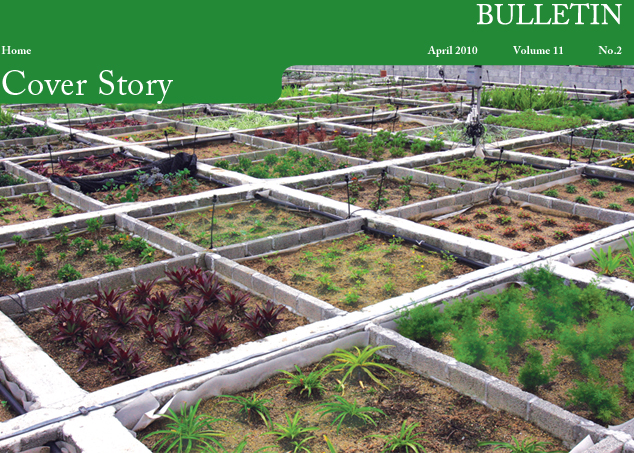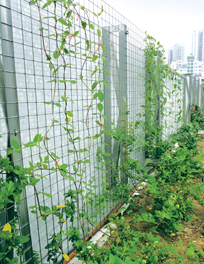

Professor Jim has been conducting extensive research on green roofs and, more recently, green walls in Hong Kong. His focus is on identifying key plants that can withstand Hong Kong's high summer heat while offering insulation effects.
"Green walls and roofs shield buildings from solar heat gain and therefore the indoor heat transmitted from outside is significantly reduced," he said.
Green roofs coverage can reduce surface temperatures generally by up to 20 degrees Celsius and protect the building fabric, especially the waterproofing membrane, from the effects of solar heat and wet/dry, heating/ cooling changes. The environmental impacts can be even greater depending on the species chosen.

Professor Jim has applied some of his findings in the field, for instance at the Tai Po railway station, the rooftop of a CLP Power substation where he planted a woodland and an upcoming project to green sewage treatment tanks in Sha Tin. And he will soon apply them at HKU.
The Estates Office has agreed to let him establish green walls on the Knowles Building and the Main Library, using climbers because they are much cheaper than mounting soil vertically. He wants to see how high they will grow, something that has not been tested before.
"It's important that my research will be able to provide some clear guidelines with a scientific basis for people to choose and nurture species for greening building facades and walls and roofs in this climate," he said.